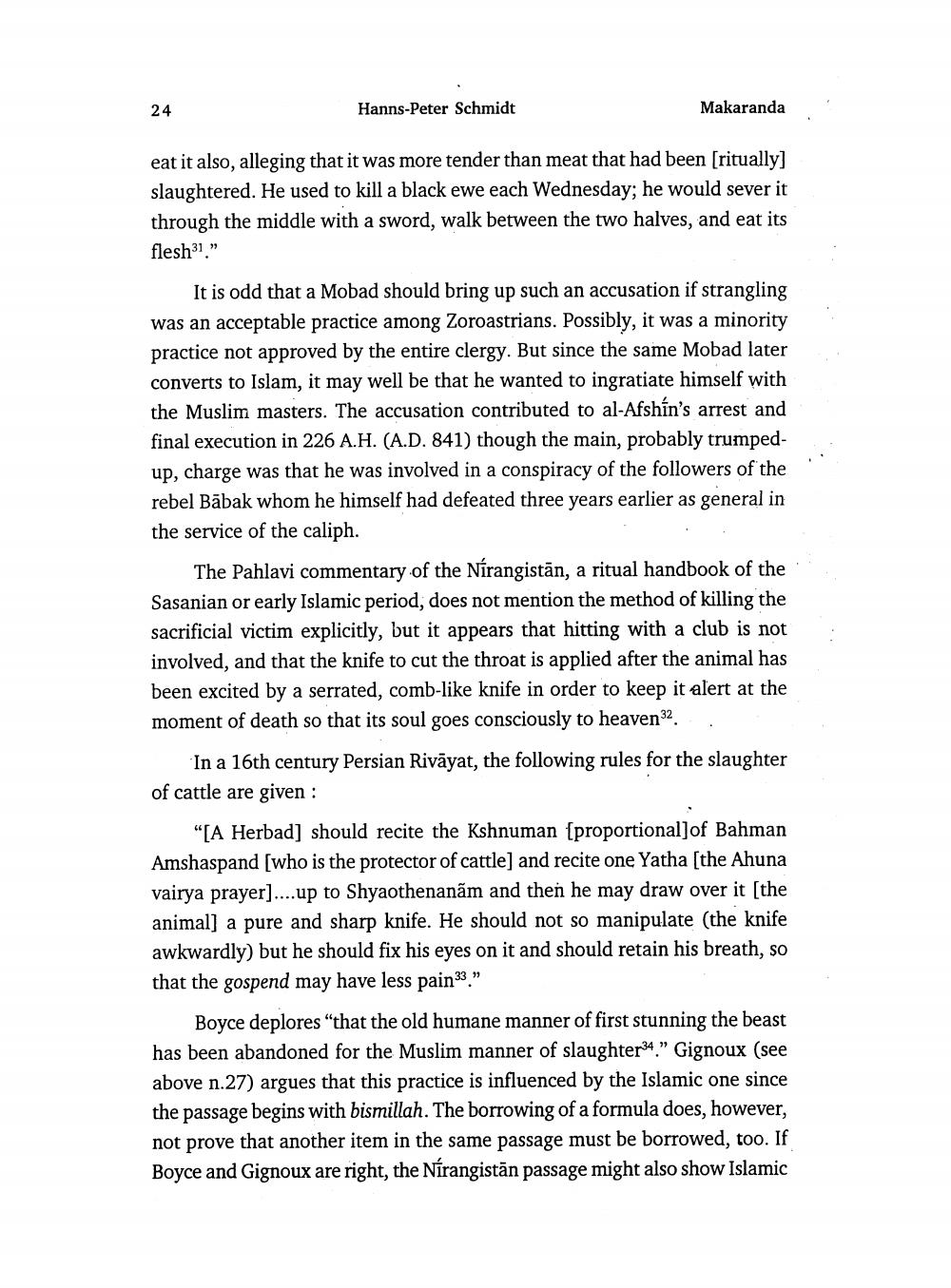________________
24
Hanns-Peter Schmidt
Makaranda
eat it also, alleging that it was more tender than meat that had been [ritually] slaughtered. He used to kill a black ewe each Wednesday; he would sever it through the middle with a sword, walk between the two halves, and eat its flesh."
It is odd that a Mobad should bring up such an accusation if strangling was an acceptable practice among Zoroastrians. Possibly, it was a minority practice not approved by the entire clergy. But since the same Mobad later converts to Islam, it may well be that he wanted to ingratiate himself with the Muslim masters. The accusation contributed to al-Afshin's arrest and final execution in 226 A.H. (A.D. 841) though the main, probably trumpedup, charge was that he was involved in a conspiracy of the followers of the rebel Bābak whom he himself had defeated three years earlier as general in the service of the caliph.
The Pahlavi commentary of the Nirangistän, a ritual handbook of the Sasanian or early Islamic period, does not mention the method of killing the sacrificial victim explicitly, but it appears that hitting with a club is not involved, and that the knife to cut the throat is applied after the animal has been excited by a serrated, comb-like knife in order to keep it alert at the moment of death so that its soul goes consciously to heaven32.
In a 16th century Persian Riväyat, the following rules for the slaughter of cattle are given:
"[A Herbad] should recite the Kshnuman [proportional] of Bahman Amshaspand [who is the protector of cattle] and recite one Yatha [the Ahuna vairya prayer].....up to Shyaothenanam and then he may draw over it [the animal] a pure and sharp knife. He should not so manipulate (the knife awkwardly) but he should fix his eyes on it and should retain his breath, so that the gospend may have less pain."
Boyce deplores "that the old humane manner of first stunning the beast has been abandoned for the Muslim manner of slaughter"." Gignoux (see above n.27) argues that this practice is influenced by the Islamic one since the passage begins with bismillah. The borrowing of a formula does, however, not prove that another item in the same passage must be borrowed, too. If Boyce and Gignoux are right, the Nirangistän passage might also show Islamic




